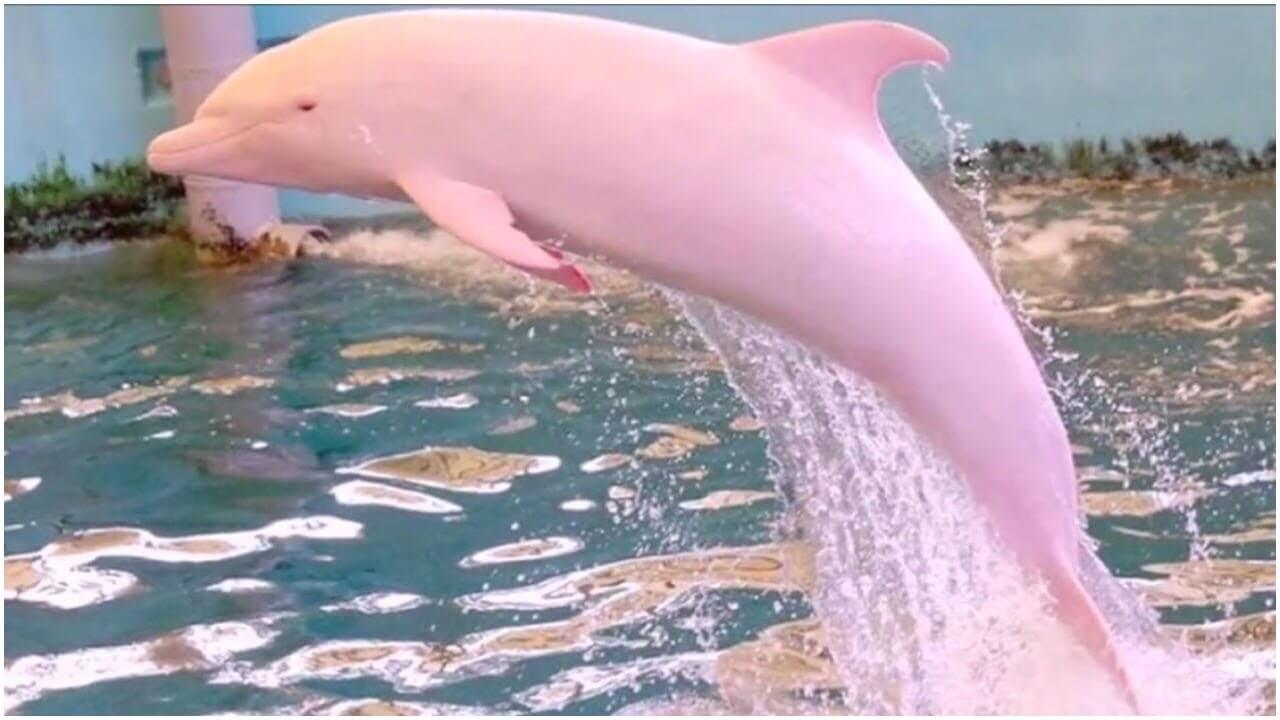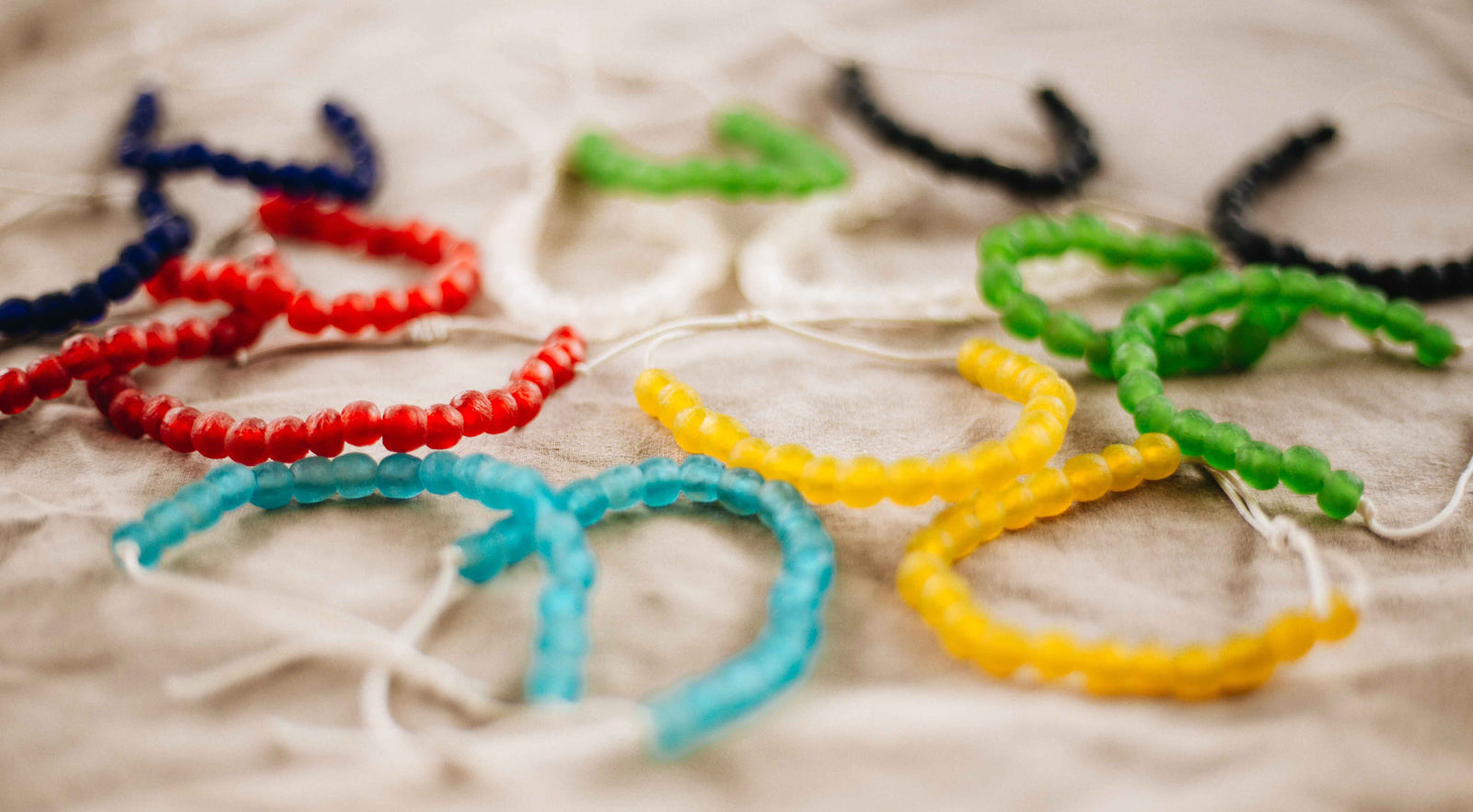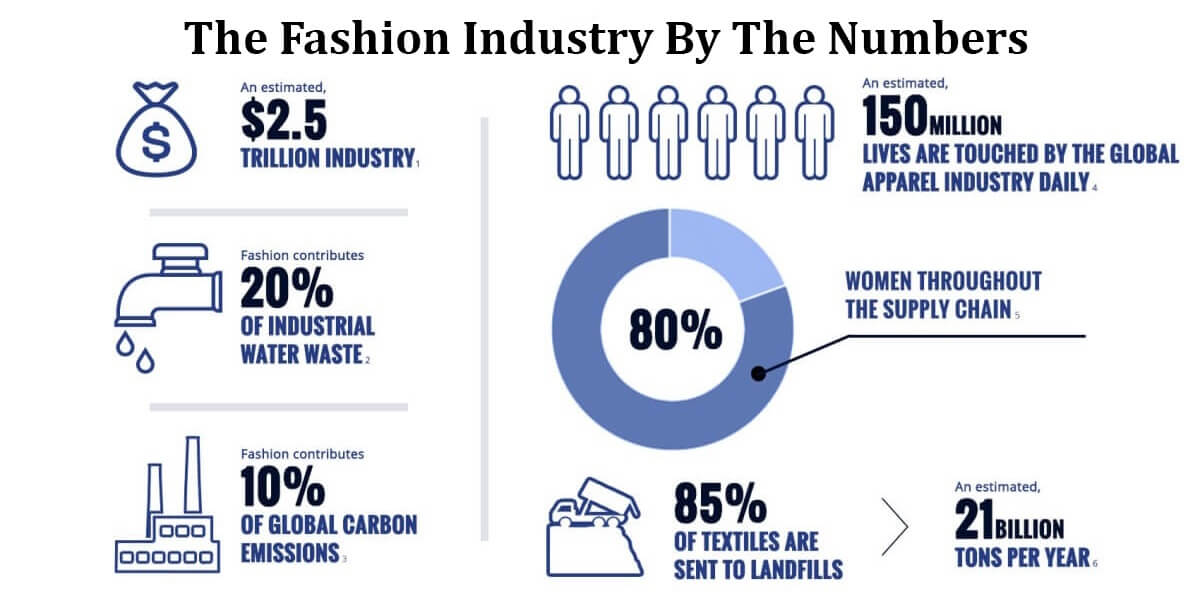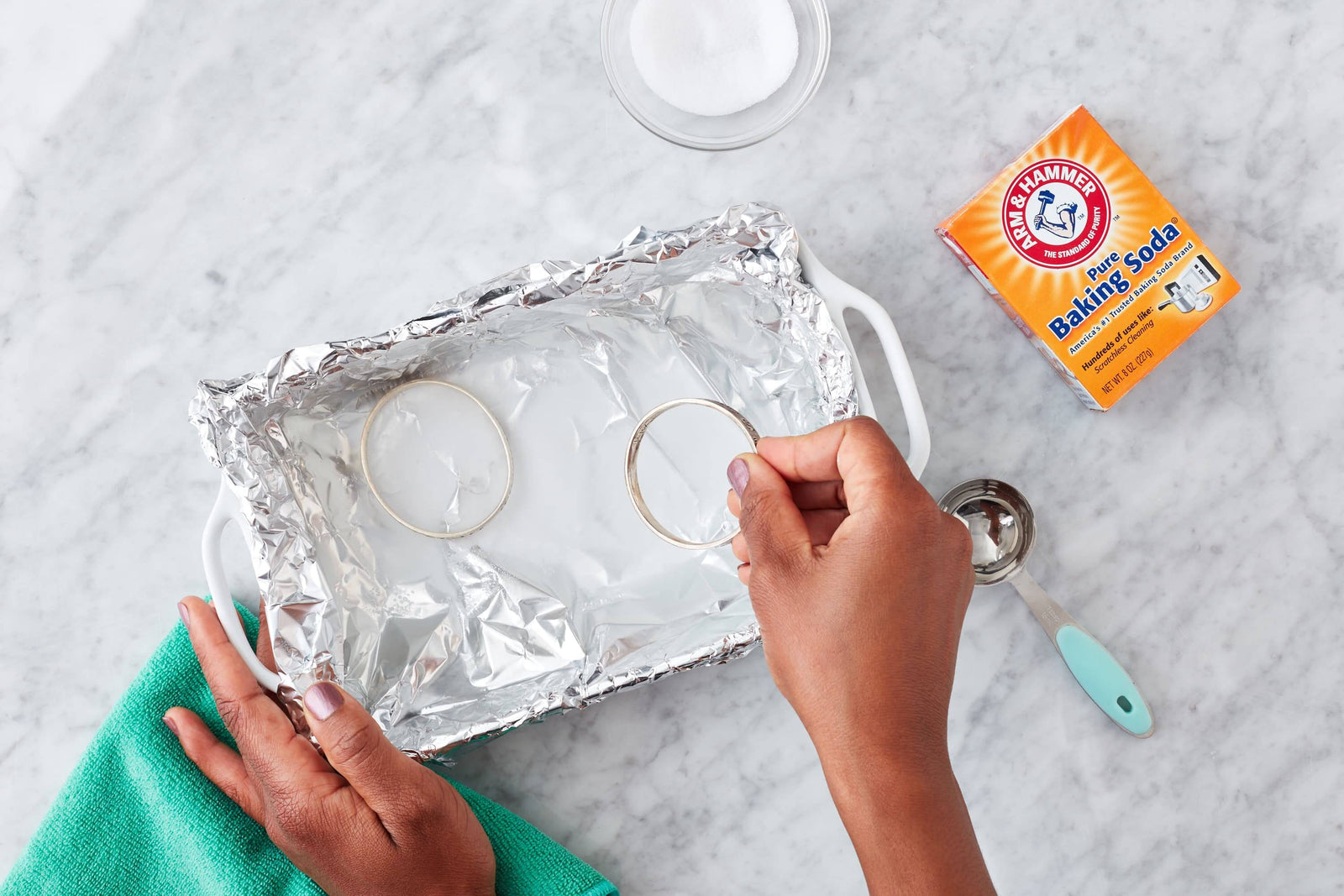Your Cart is Empty
Be the Change You Wish To See In The World!!!
How Dolphins Are Affected by the Plastic Pollution Problem
In March 2019, fifty marine mammals washed ashore in the United Kingdom. Every one of them had plastic in its stomach. Most of these mammals were cetaceans, dolphins, whales, or porpoises.
An estimated eight million tons of plastic enter the ocean each year. Plastic is not biodegradable, so it stays in the ocean for decades, circulating and poisoning marine ecosystems around the world. Every square mile of the sea, from the surface to the floor, has plastic in it. Scientists predict that by 2050, plastic debris will outnumber living fish in the sea.
Plastic pollution affects all ocean species, from plankton to fish to sea birds. Cetaceans like dolphins are among the species at risk because of their feeding habits. Even though dolphins are intelligent and can tell the difference between food and plastic, they will inevitably ingest the latter. As a result, dolphin species are threatened. Wildlife conservation groups and ocean cleanup organizations exist to combat the growing crisis. However, they need help.
Macro and Microplastic Pollution
The already massive cleanup efforts are hindered further by microplastics. What are those? There are two types of plastic pollution in the ocean, macroplastics and microplastics. Macroplastics are larger, easy to see pieces of plastic like straws, bottles, bags, and containers. They are easy to spot and easy to skim out of the water. Microplastics, however, are smaller than 5 mm long, which is about the size of a sesame seed. When plastics break down in the ocean due to saltwater and sunlight, the pieces become smaller, but they do not fully degrade into the environment.
So, these microplastics are harder to filter out of the water. They end up in the stomachs of fish and other sea creatures, such as dolphins and whales. Approximately 60% of all stranded cetaceans consumed plastic. This means over half of this population is at risk of dying from plastic.
How Plastic Pollution Threatens Cetaceans
Cetaceans are likely to consume plastic because their feeding methods include filtering as well as hunting, which makes ingesting plastic debris inevitable. While they are intelligent animals, a whale cannot separate the particles that it filters. Microplastics make their way in as the whale takes gulps of seawater during feeding.
Dolphins and whales that hunt can swallow plastic accidentally as well as occasionally mistake plastic for food. In addition, their prey most likely has plastic in it as well, which transfers to the cetacean that consumes it.
As plastic accumulates in the animal’s body, the animal feels full. It can no longer feed itself and starves to death. Plastic can also contain viruses and bacteria that impact the animals’ health.
Reducing Plastic Pollution
To combat plastic pollution, some regions and governments have taken action. They have banned certain single-use plastics like straw, plastic bags, and containers. Some manufacturers are working on recyclable materials to replace their current single-use containers.
For example, Costa Rica has set a goal to eliminate single-use plastics by 2021. Organizations such as The International Marine Mammal Project (IMMP) advocates for ordinances to ban plastics. They promote the use of items made with alternative materials like corn starch that breaks down after use.
There are things you can do on an individual level as well. You can support organizations like the IMMP and others that are dedicated to cleaning up the ocean. You can switch to reusable and recyclable materials yourself to reduce your plastic footprint.
It will take all of us to clean up our ocean and preserve the whale and dolphin species that live within it.
A Little Hope
Dolphins face an ever-increasing threat of plastic in their habitat. Amid this sobering crisis, there is hope that motivates us to defend these beautiful creatures. One such example is a pink dolphin named, of course, Pinky. Pinky is a celebrated, rare pink dolphin in the wild who recently gave birth to a pink calf.
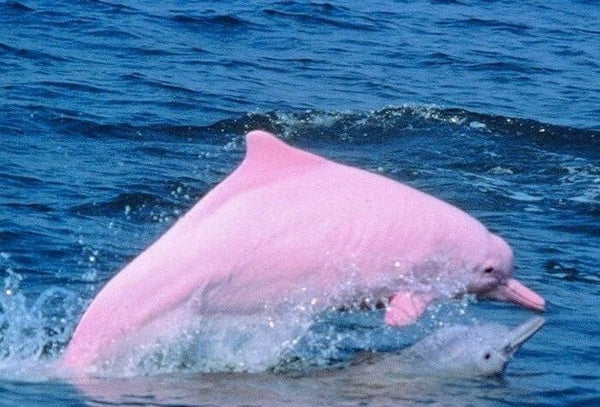
Pinky gained notoriety over 12 years ago when folks spotted her in the Calcasieu River, which is in Louisiana. She was regularly seen swimming in the area, sometimes mating with other dolphins. Recently, a man named Thomas Adams posted a video to Pinky’s Facebook page of Pinky and her baby. Mother and calf are jumping close to Adams’ boat in the Calcasieu Ship Channel.
What makes Pinky so rare is, of course, her pink color, which is from a genetic mutation. Pinky is entirely pink from tail to tip. She even has red eyes. Her skin is glossy and smooth. Pinky’s coloring doesn’t make her sensitive to her environment or the sunlight, even though she tends to remain below the surface a little more than other members of her dolphin pod.
She is considered endangered and vulnerable because there are only a few thousand of her kind left. So, seeing the little pink calf gives us all hope that dolphins like Pinky, and all dolphins, can increase their populations despite the environmental dangers they face as the world’s oceans become more and more polluted.
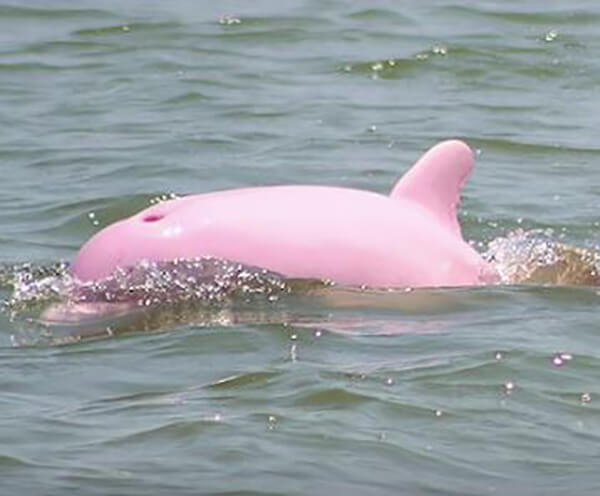
The Dolphin Bracelet
At Bead the Change, we support ocean conservation as well as projects dedicated to protecting dolphins, one of the sea’s most graceful creatures. For example, one of our most popular charity bracelets is our Ocean Cleanup Bracelet, which supports The Ocean Cleanup. The Ocean Cleanup is a nonprofit organization dedicated to ridding the area known as the Great Pacific Garbage Patch of plastic waste.
Ten percent of every ocean bracelet purchased goes to this organization. This save the ocean bracelet is made of beautiful turquoise glass beads made from recycled glass bottles. Even the cord is made from reclaimed plastic water bottles.
We are also proud to announce that we are expanding our ocean plastic bracelet line to include our upcoming Dolphin Bracelet. We have designed our dolphin bracelet in four shades of beautiful blue beads made from recycled glass bottles. Also, the elastic cord makes the bracelet one-size-fits-all, perfect for men and women alike.
Our new line of bracelets will support the Sea Shepherd Conservation Society, which is an international marine conservation organization. They defend, conserve, and protect wildlife and the ocean from environmental destruction.

Comments will be approved before showing up.
In short, ethical fashion works toward the social good of society. It takes into account the workers who make the clothing industry possible. This includes everyone from the farmers who grow the fabric to the garment workers who stitch the pieces together. These efforts go beyond the surface we see as consumers. Rather, social good is deeper than the public image. A brand must take care to ensure fair wages, maintain fair trade certifications, and provide healthy working conditions. The ethically responsible brand invests in its people as much as it does its product, if not more so.
Now, you never have to tuck your jewelry away because it needs a deep cleaning. You can keep your jewelry sparkling yourself using eco-friendly cleaning agents you probably already have around the house.
Here are a few cleaning options that don’t involve harsh chemicals.
